
Japan Adventure Itinerary
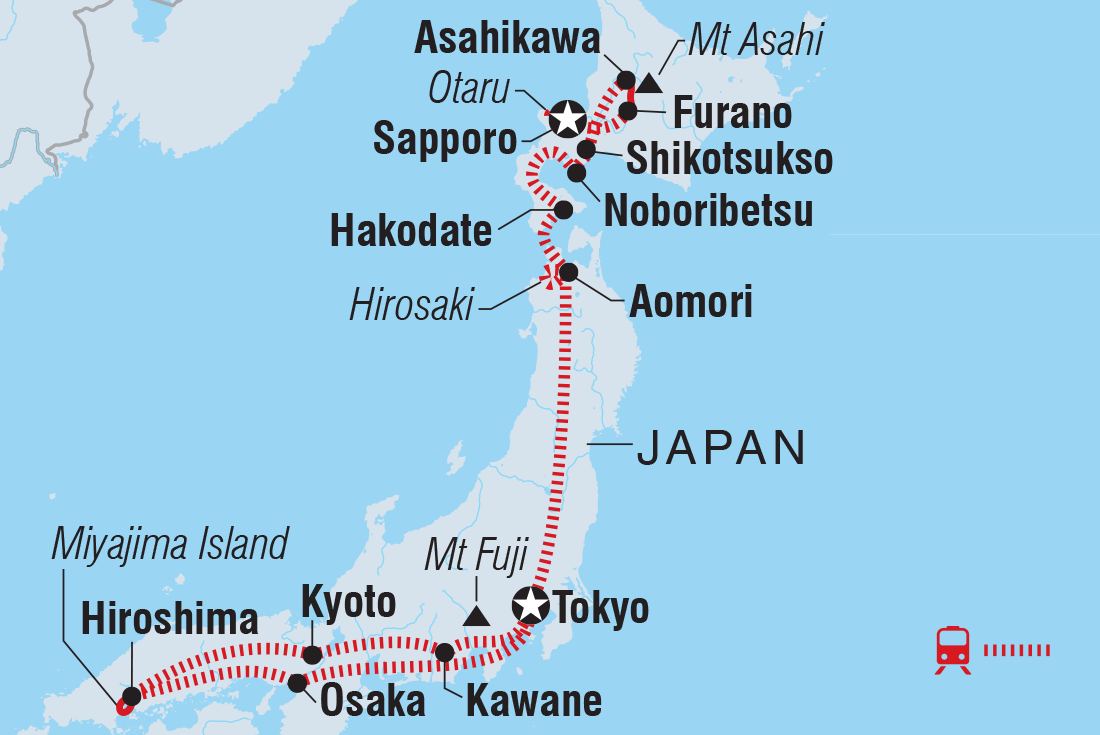


Konnichiwa! Welcome to Japan. Your adventure starts with a welcome meeting at 6 pm tonight in Tokyo. Bursting with contemporary urban culture, Tokyo has fascinating museums, world-class shopping and backstreets stuffed with restaurants and karaoke bars. If you arrive early, maybe check out an Urban Adventure Tour in Tokyo or walk down Shinjuku’s Omoide Tokocho (Memory Lane) – a crowded alley of busy restaurants and bar stalls that's now one of the best spots to try some of Tokyo’s local fast food. After your meeting, follow your leader on an orientation walk, then maybe head out for dinner and get to know your fellow travellers.
Dive right into Tokyo today by exploring historic Asakusa – one of the older and more traditional parts of the city. Visit the city’s oldest temple, Senso-ji – founded almost 1400 years ago when Tokyo was nothing more than a fishing village. Then, browse the many interesting stalls along the shopping street of Nakamise Dori. After, hop on the metro and head to the buzzing Shibuya area. Check out one of the busiest intersections in the world before heading into a depachika (underground food hall) for a mouth-watering array of tempting Japanese treats. Next, allow the city sounds to fade away as you visit Meiji Shrine, surrounded by forest. Then it’s back into the city streets to explore the Harajuku district – the home of Japan’s quirky youth pop culture. The rest of the afternoon is free for you to spend at your leisure.
Today, you’ll hop on a local train to Kanaya station, then transfer to the scenic train that travels through the mountains and gorges of Kawane. The ride is especially beautiful during cherry blossom season in the spring and when the colours change in autumn! Watch out for a glimpse of Mt. Fuji on the way when the weather is good! This afternoon, visit a local tea farm, try your hand at tea picking and learn how the tea is properly brewed. After this experience, your host for the night will welcome you to their home. Dinner will be a home-cooked feast using seasonal vegetables from their garden, and your host will be able to teach you a thing or two about Japanese home cooking.
For some departures, you'll travel to Gotemba instead. This is to ensure that we do not overwhelm our Kawane hosts with too many groups and ensure we are working with local communities in a sustainable manner. For these departures, you'll travel to Gotemba instead and your local hosts will welcome you into their home. You'll be able to help pick the vegetables that'll be used for dinner from their garden, learn about their life in the countryside and enjoy a fantastic home-cooked dinner together.
After a home-cooked, Japanese-style breakfast, hop on the bus and a Shinkansen bullet train to Kyoto. One of Kyoto’s original names was Heian-kyo, which translates to ‘tranquility and peace capital’, and the thousands of temples, shrines and gardens make it clear why. In the afternoon, head to the Nishiki Market and stroll through ‘Kyoto’s Kitchen’ for the perfect introduction to Kyoto's regional specialties – from pickled vegetables hidden beneath layers of fermented rice to delicious and ornate Kyo-wagashi (Kyoto sweets) and other local produce. As the sun goes down, continue to Gion – the city’s cultural centre and most famous geisha district. You may catch a glimpse of an elegantly attired geisha or maiko moving between teahouses here, though much of this high-class world of entertainment is still off-limits to outsiders.
Today, you’ll head to one of the most photogenic spots in Kyoto – Fushimi Inari Taisha shrine. Famous for the thousands of scarlet torii (square archways) along the path, this shrine is dedicated to Inari – the god of rice. The rest of the day is free for you to explore at your own pace. Maybe visit the Path of Philosophy, see the Old Town and explore the wooden houses, or visit Kinkakuhi Temple, which was immortalised in Yukio Mishima’s novel ‘The Golden Pavilion’. Tonight, maybe find a local restaurant for dinner – your leader will have the best recommendations.
Travel by express train and shinkansen to Hiroshima today. Depending on what time you arrive today, you may visit Hiroshima’s Peace Park this afternoon or tomorrow morning. The Genbaku (A-Bomb) Dome and Peace Memorial Museum stand testament to the fateful day in August 1945. The dome was just metres from where the bomb detonated, so it was able to retain its shape. The fact that it looks almost exactly as it did after the bombing has made it an enduring symbol of peace. The memorial park serves the same purpose, and has museums, memorials and monuments dedicated to the memory of victims. This evening, head out with your leader for one of the city’s signature dishes for dinner – okonomiyaki (a savoury pancake of egg, cabbage, soba noodles and meat or seafood).
Today you'll make your way to the nearby island of Miyajima with its well-known 'floating' torii gate. When you arrive, maybe explore the island further by climbing to the top of Mt Miyajima (or hopping on the cable car instead) for 360-degree views of the Inland Sea. Keep your eyes out for inquisitive and hungry deer that roam the streets. After, visit the Saijo Sake Brewery Street and taste some locally produced sake. The rest of the day is then free for you to explore Hiroshima at your own pace. Maybe stop by the five-storied Hiroshima Castle, which originally dates to the 1590s. It was destroyed by the bomb but reconstructed in all its glory in the 1950s and now holds an informative museum. The wonderful Shukkeien Garden, with teahouses and waterfalls, is also a perfect place to decompress.
Jump back on the train this morning and head to Osaka – Japan’s unofficial food capital. When you arrive, follow your leader on an orientation walk, then explore the city at your own pace. Meet in the evening for a street food walking tour with your group through Dotombori District and Kuromon Market and celebrate the last night of your trip.
This morning, you’ll board a train to Tokyo. The rest of the day is then free for you to explore until your second welcome meeting at 6 pm tonight. In your free time maybe, wander through the Yoyog Park or visit the Imperial Palace. After you welcome meeting, maybe get to know your new travellers over dinner at a local restaurant.
Hop on a bullet train (shinkansen) this morning and head north to Aomori, where you can relax and enjoy the countryside views. When you arrive, get your bearings with a leader-led orientation walk and then enjoy a free afternoon. Maybe visit the Sannai-Maruyama Archaeological Site, which gives an insight into how prehistoric Japanese people lived, or the Aomori Museum of Art, which features an impressive blend of contemporary art and local heritage exhibitions. Seafood lovers might want to check out Aomori Nokkedon – a market where you can sample a variety of local seafood, such as sea urchin and squid, using a fun ticket-based system (simply exchange a ticket for the seafood of your choice).
Hop on a train this morning and head to Hirosaki for the day. One of the most famous festivals in Japan is held here every August – the Nebuta Matsuri – featuring large lantern floats of mythological warriors. You’ll see some of these floats on display in Tsugaru Neputa Village, before you make your way to Hirosaki Castle. Enjoy a tour of the feudal-era three-storey castle and hear more about its role in the annual Hirosaki Cherry Blossom Festival before heading back to Aomari for a free afternoon.
Today you’ll make your way to Hokkaido Island via bullet train. When you arrive in Hakodate, your leader will guide you on an orientation walk, with a stop at a fish market for lunch. It’s famous for its fresh seafood and is a great spot to try some local delicacies like kaisuke (oysters) or kaisendon (seafood donburi). Continue to Goryokaku Tower for wonderful views of the national historic site Goryokaku – a star-shaped public park which was once a fort designed to modernise the island’s military defence. The evening is free for you to explore Hakodate as you wish – feel free to ask your leader for any restaurant recommendations!
Traverse more of Hokkaido today by heading to Noboribetsu by train – a famous onsen (hot spring) town, part of the larger Shikotsu-Toya National Park. You’ll go straight to Jigokundani, literally meaning ‘Hell Valley’, this is an apt name for the volcanic activity on display! There are nine different types of onsen in Nororibetsu and they’re all powered by the geothermal activity at this volcanic crater. Tonight, you’ll stay in a ryokan hotel (traditional Japanese inn) that offers a range of onsen baths to try – the perfect chance to soak away your travel fatigue.
Pass through rural Hokkaido as you travel to Shikotsuko by train and bus, where you’ll be welcomed by the sight of Lake Shikotsu – a caldera lake formed by volcanic activity. Cruise along the clear water in the afternoon in a canoe and admire the surrounding forests. Shikotsuko is known for its natural beauty and tranquil atmosphere so soak up the calm vibe on the lake. Return to another ryokan hotel this evening and take advantage once again of the relaxing hot springs. Then, tuck into a kaiseki dinner – a traditional Japanese fine dining multi-course experience.
Today you’ll journey to Asahikawa – the second largest city in Hokkaido, located in the heart of the island. It’s one of the coldest cities in Japan so make sure you layer up for your leader-led orientation walk if you’re visiting during winter. After, maybe check out Otokoyama Sake Brewing Museum, where you can learn about sake-making methods and sample some of the renowned local beverage. You can also opt to walk along Japan’s first permanent pedestrian shopping street – Heiwa Dori Shopping Street – or visit Alley Furarito for some casual dining or izakaya (Japanese-style pub) options.
Start your day with a visit to the Kawamura Kaneto Ainu Museum and learn about the rich culture of Ainu people – an Indigenous group from the northern regions of Japan. This is the first Ainu museum in Hokkaido and set up back in the 30s by an Ainue family who was hoping to preserve Ainu culture through the museum, and it's still owned by the same family. Join a guided tour, and if you are lucky, it may be led by a member of the Ainu family who established the museum, and gain insight into their history and traditions. After, get familiar with Ainu food during a cooking demonstration showcasing Ainu dumplings (and then sample some for yourself!).
Hop in a private transfer to Asahidake Ropeway – a line that climbs Mount Asahi, the tallest mountain in Hokkaido. Get all the rewards without the sweaty workout by riding the ropeway up the mountain, taking in the elevated views. After, drive to the Blue Pond – a body of water with a deep blue hue due to natural minerals – before continuing to Furano, where you’ll spend the night. Perhaps try some local delicacies like Furano wine and cheese for dinner this evening.
Stop and smell the flowers with a morning visit to Tomita Farm. From late June to early August, you’ll see the expansive lavender fields that have made the farm famous in Japan and beyond – and there are plenty of other colourful crops to admire outside of those summer months. Travel by train then to Sapporo, the capital city of Hokkaido. Known for its winter sports scene, Sapporo is bordered by mountains and ski hills. You’ll also notice it has a grid-based street layout, which is very rare for Japan – and easy to navigate! The evening is yours to explore at our own pace – maybe stop for a Sapporo beer and miso ramen in a local restaurant.
Head out on daytrip today to Otaru – a nearby town with a scenic canal area – and enjoy some free time roaming the streets. Maybe visit the Otaru Music Book Museum, home to 25,000 music boxes and lots of information on the city’s music box craftsmanship. If you visit during February, you might catch the Snow Light Path Festival – a winter wonderland of lanterns and ice sculptures. Head back to Sapporo for a farewell dinner of Sapporo's signature Genghis Khan roasted lamb and toast to your Japanese adventure with your group.
Your trip comes to an end this morning after breakfast. You can leave at any time before the checkout time.

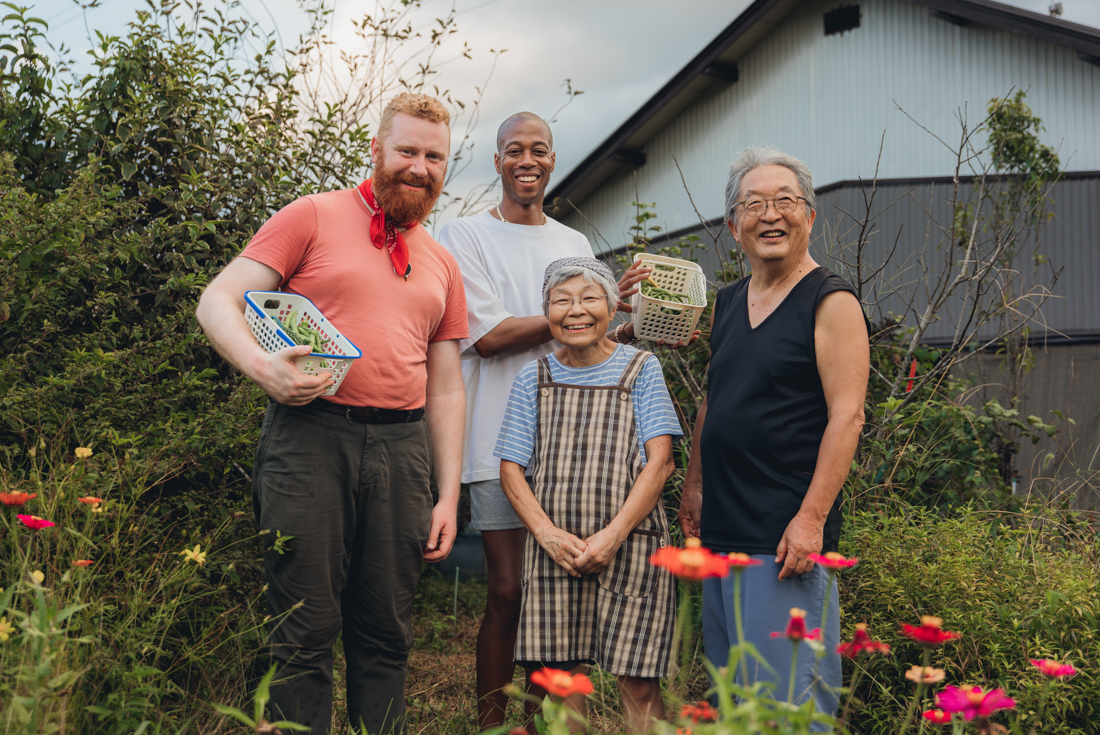
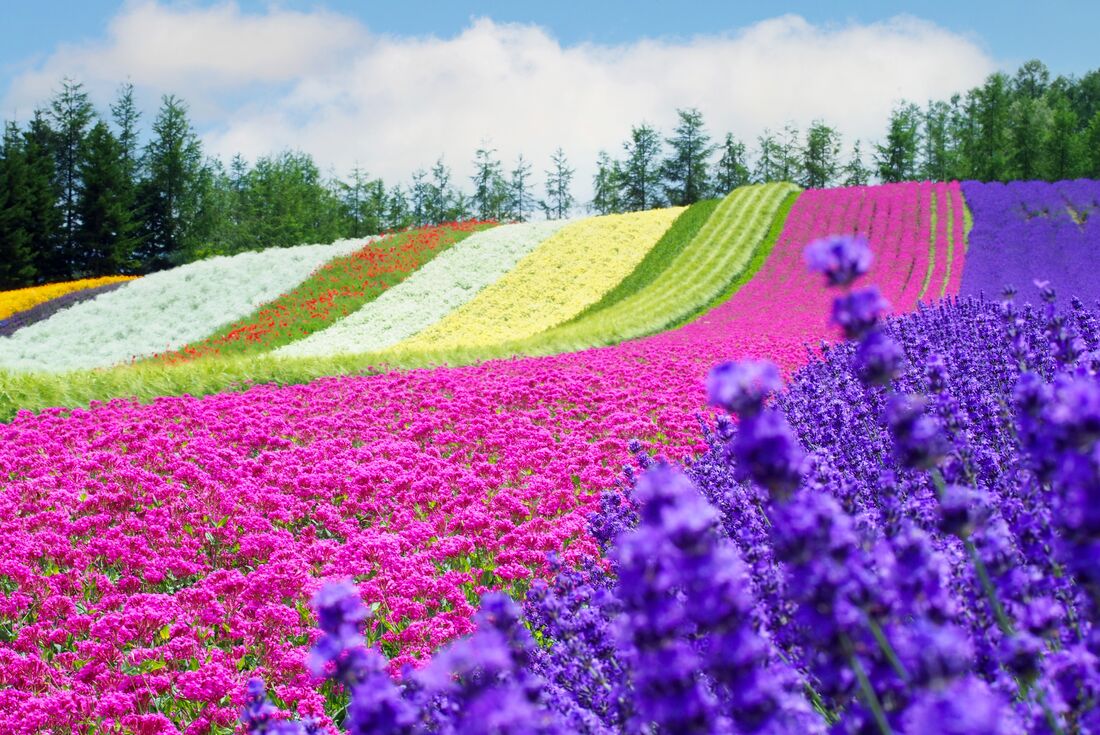
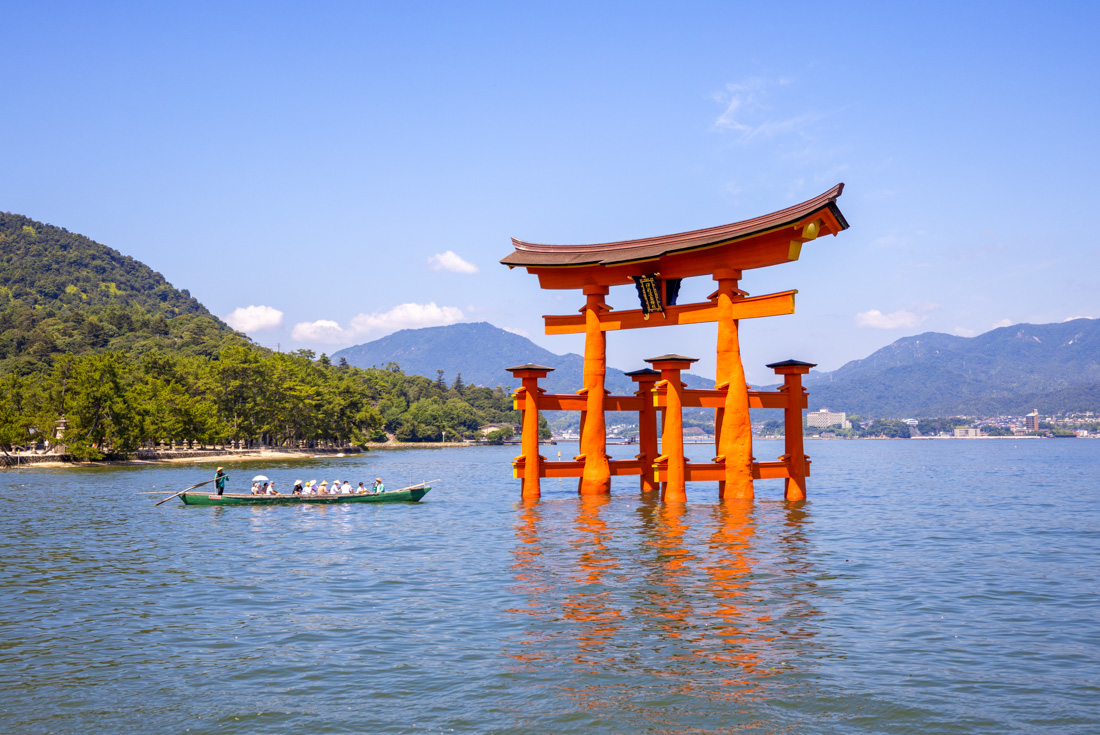
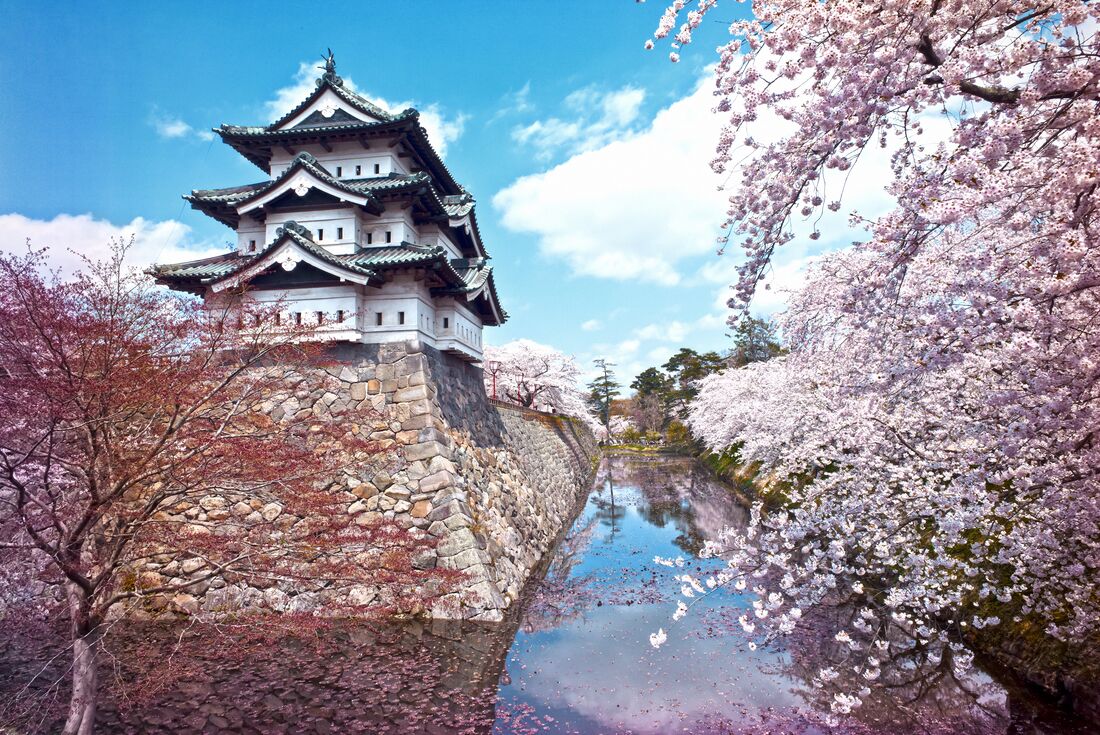
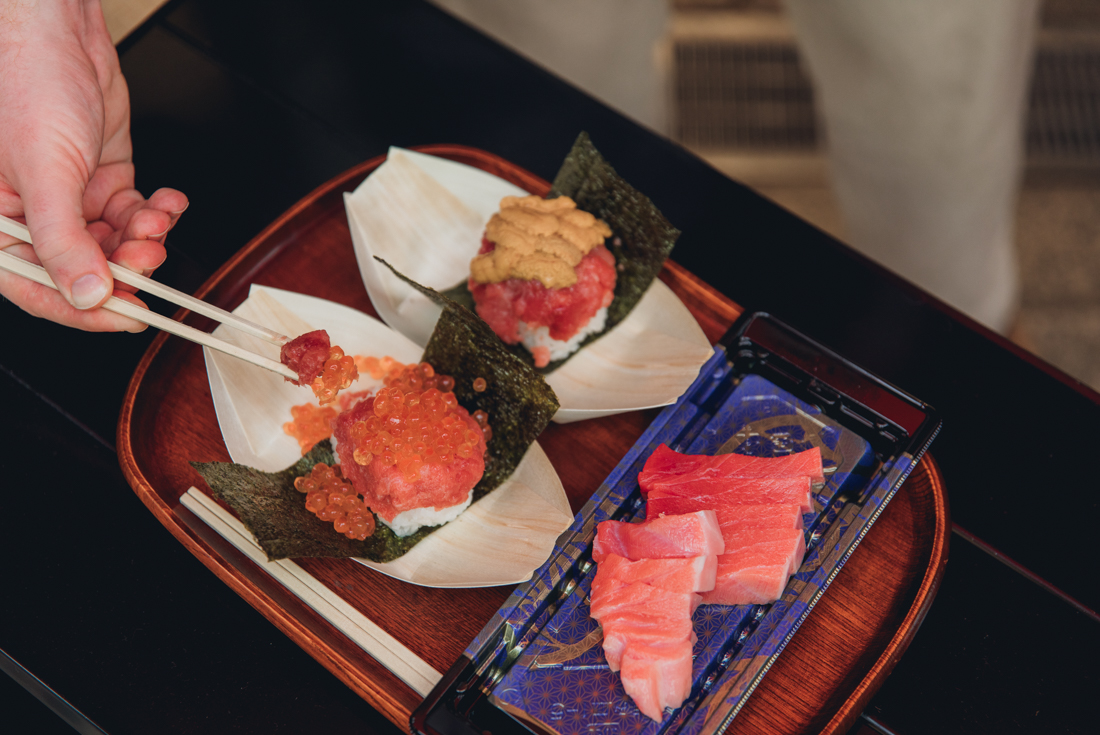
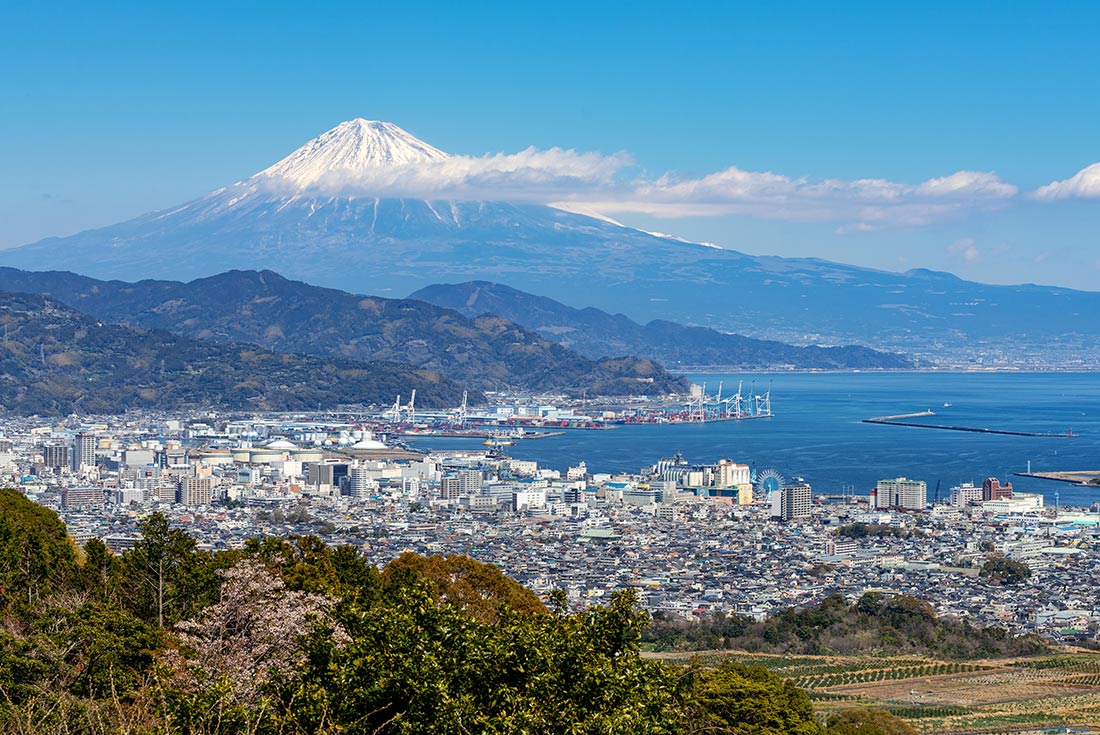
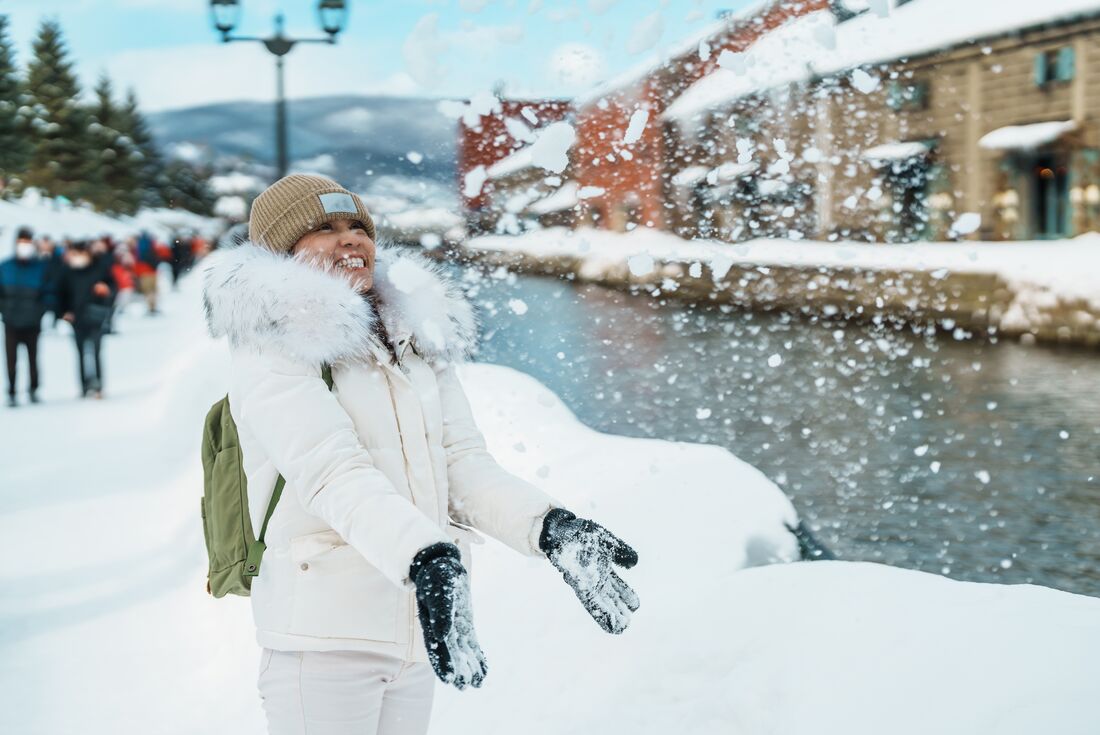

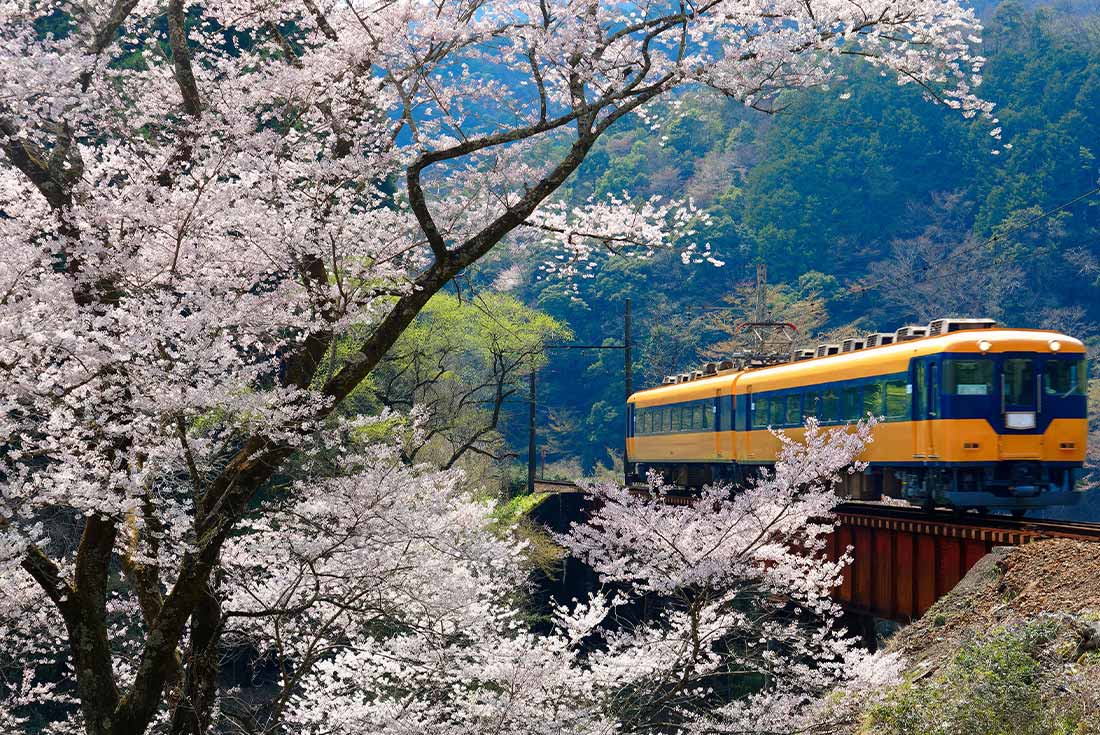
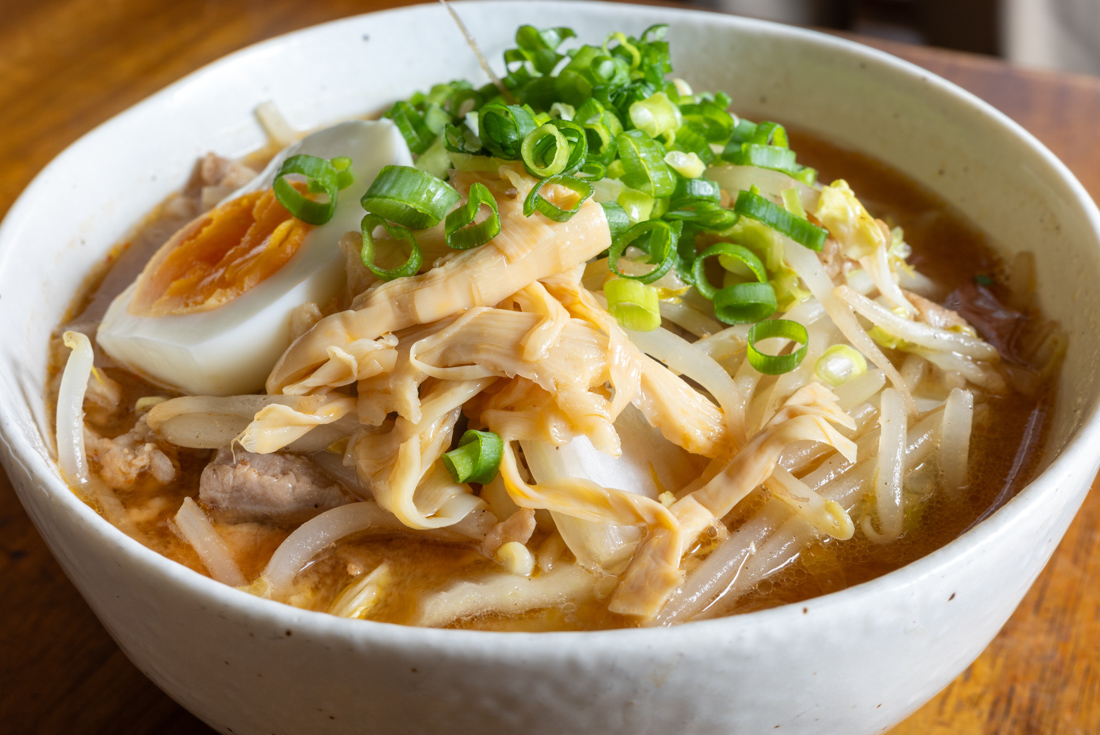
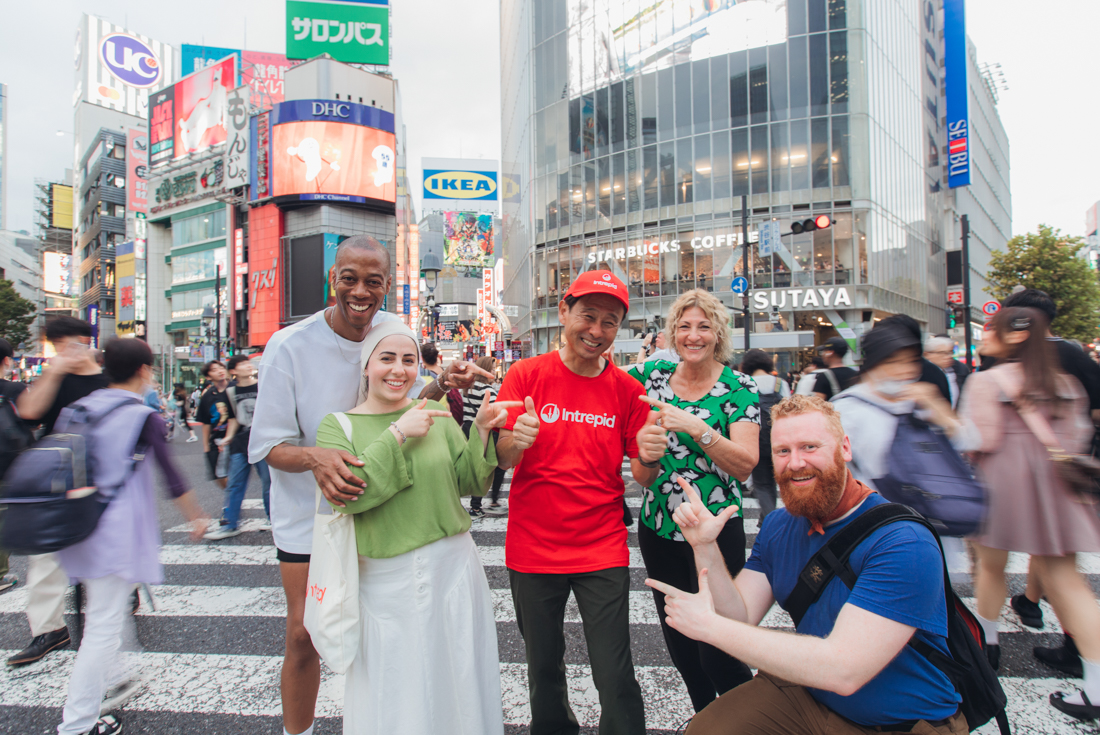
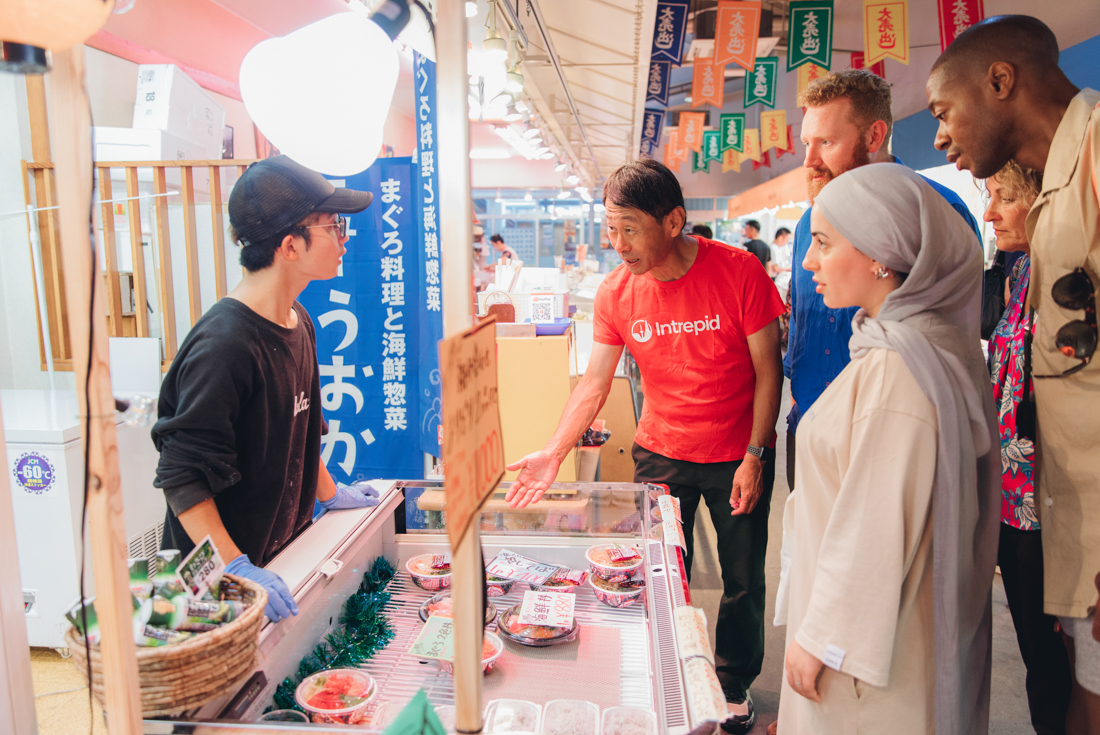

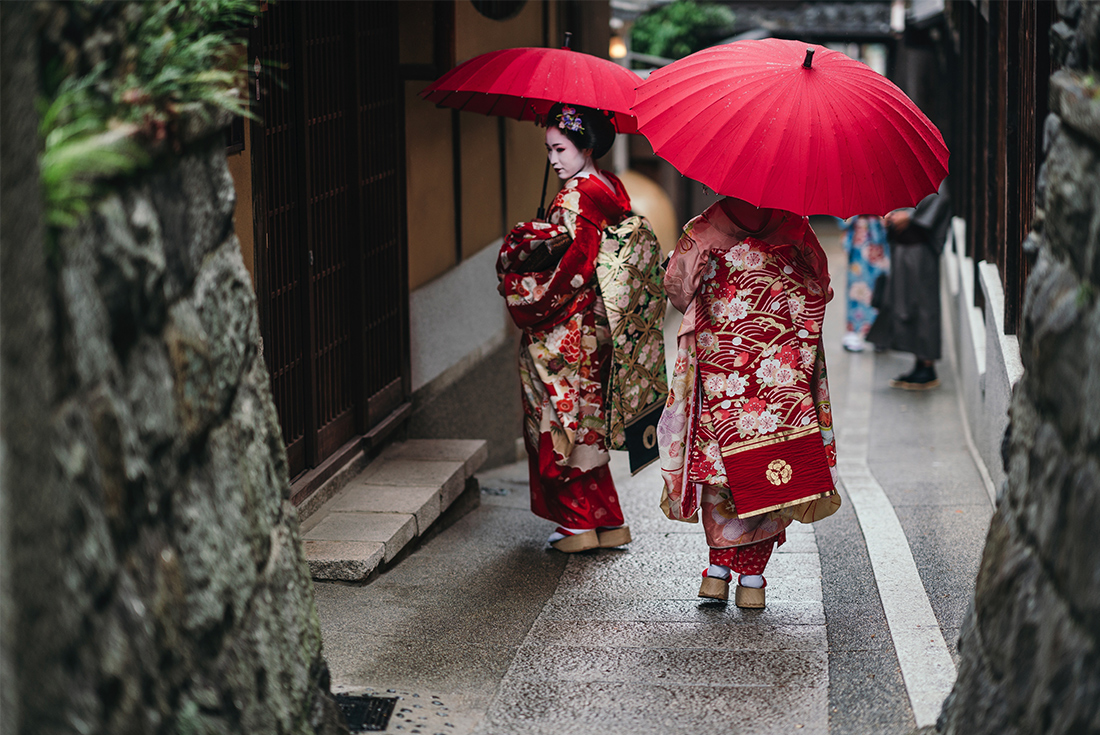
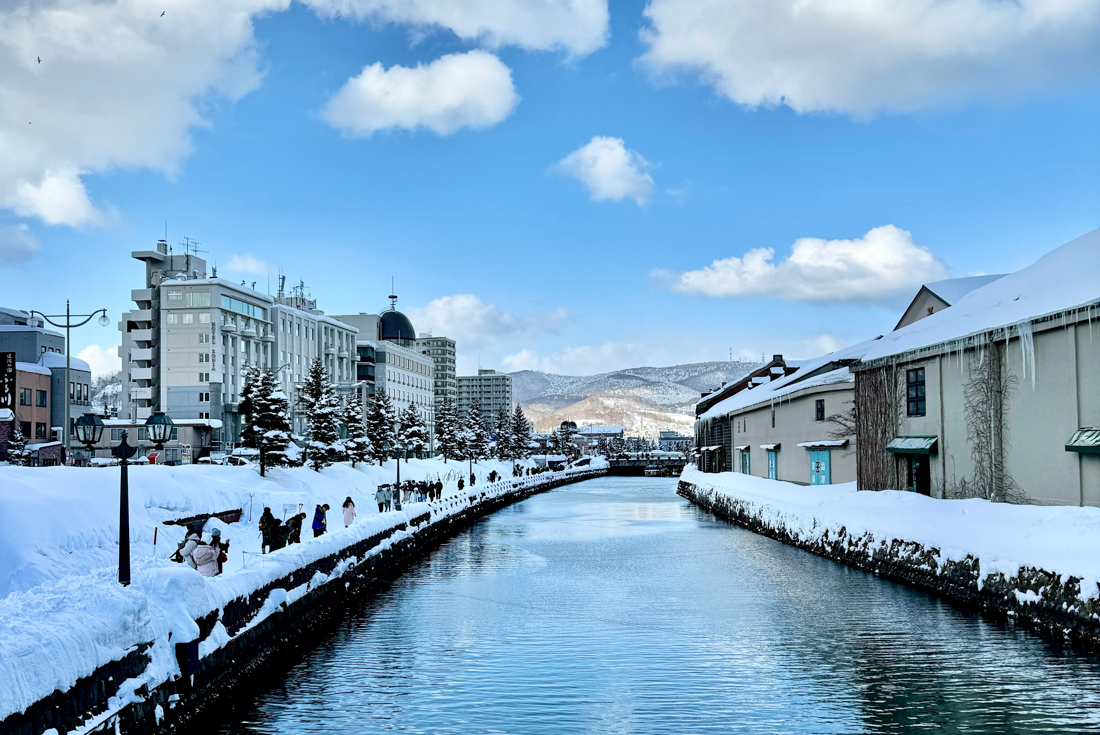

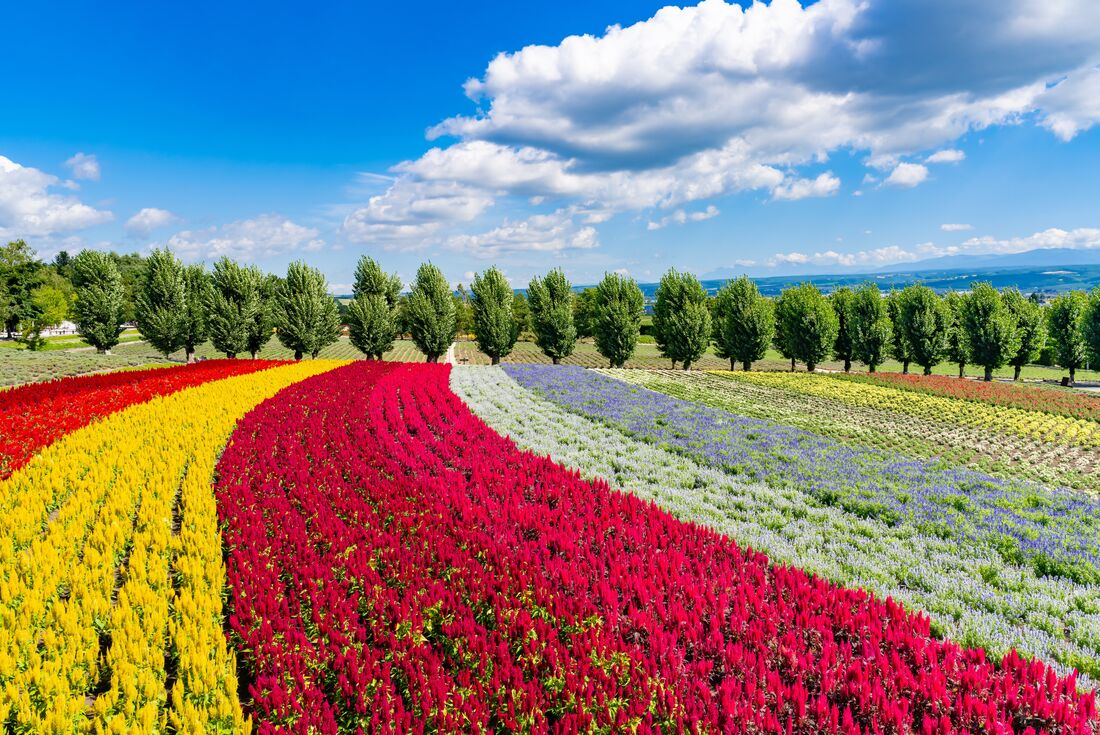

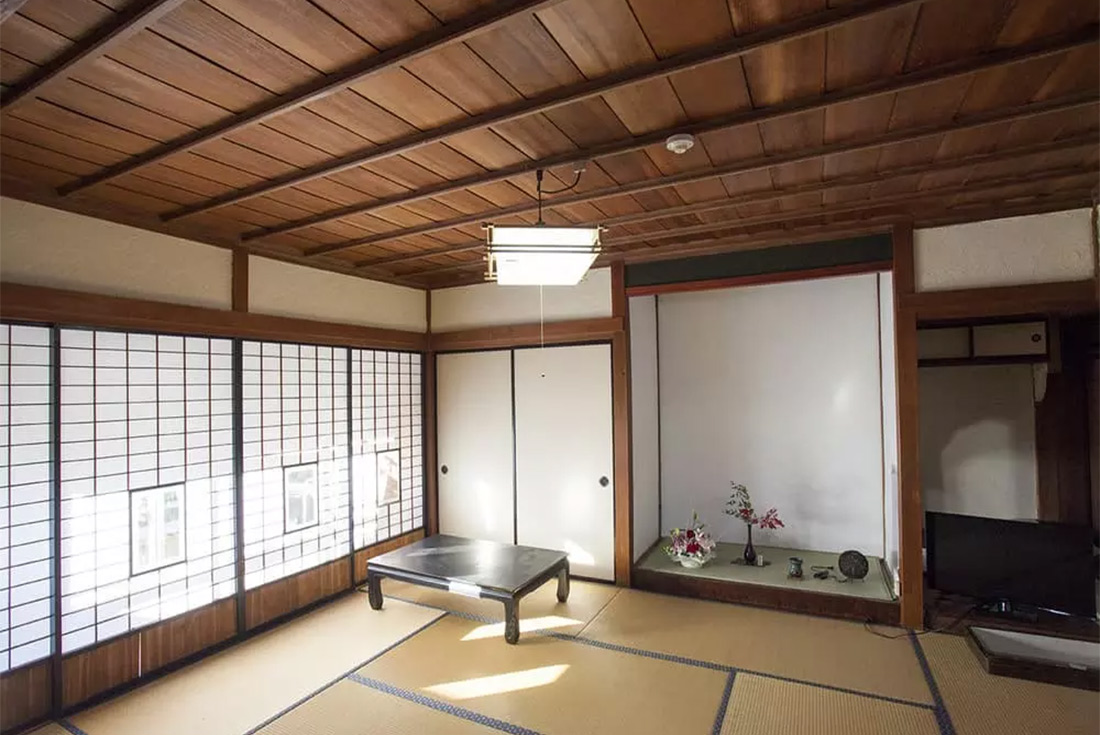


Tokyo - welcome meeting and orientation walk
Tokyo - Sensoji Temple
Tokyo - Meiji Jingu Shrine
Tokyo - Shibuya walking tour
Kawane/Gotemba - Homestay & Home-cooked Dinner
Kawane - Tea Farm Visit & Tea Brewing & Tasting (or Gotemba - Local farm and vegetable picking)
Kyoto - Gion District walk
Kyoto - Nishiki-Koji Market
Kyoto - Fushimi Inari-Taisha
Hiroshima - Okonomiyaki dinner
Hiroshima - Peace Museum
Hiroshima - Peace Park & A-Bomb Dome
Hiroshima - Miyajima Island
Hiroshima - Saijo Sake Brewery Street visit & tasting
Osaka - Dotombori and Kuromon Street Food Walking Tour
Aomori - Leader-led orientation walk
Hirosaki - Tsugaru Neputa Village
Hirosaki - Hirosaki Castle
Hakodate - City walking tour
Hakodate - Fort Goryokaku
Noboribetsu - Hell valley
Lake Shikotsu - Lake Canoe
Lake Shikotsu - Kaiseki dinner
Asahikawa - Leader-led orientation walk
Asakihawa - Kawamura Kaneto Ainu Museum
Asahikawa - Ainu dumpling making demonstration
Asahikawa - Mt. Asahi Ropeway
Asahikawa - Blue Pond (Aoike)
Furano - Tomita Farm
Sapporo - Leader-led orientation walk
Otaru - City walking tour
Sapporo - Genghis Khan lamb dinner
Visit the rural villages in Shizuoka and stay with a local family. Indulge in a heart home-cooked meal and learn a few tricks about Japanese cooking. Make sure to catch a glimpse of Mt. Fuji along the way!
Explore some of Japan’s northern natural wonders. See Hell Valley’s volcanic steam, Mt Asahi’s peaks and the serene waters of Lake Shikotsu and discover the culture of Ainu people – the first indigenous group in Hokkaido.
Treat your taste buds to a signature Okonomiyaki pancake in Hiroshima, sample Osaka's best street food and savour a signature Kaiseki dinner in a ryokan.
Ride the rails like the locals, from lightning-fast bullet trains to scenic mountain rails offering seasonal views of cherry blossoms and autumn leaves.
Stay in two local ryokan hotels and immerse yourself in the iconic Japanese onsens (relaxing natural hot springs).
Candeo Hotels Ueno Koen, 1 Chome-2-13 Negishi, Taito City, Tokyo 110-0003, Japan , Tokyo, JAPAN
Comfort Hotel ERA Sapporo North, 17-1, Kita 7 nishi 5, Kita-ku , Sapporo, JAPAN
1. We are currently unable to offer a single supplement, airport transfers or additional accommodation in Japan due to limited availability.
2. It is essential that you pack light and compact for rail travel in Japan. Luggage size restrictions apply. Please review the ‘Packing’ section of the Essential Trip Information for more details.
3. This trip is a combination of two trips. Please review the Itinerary for details of when your fellow travellers and leader will change.
While we always endeavour to provide the best possible holiday experience, due to the nature of travel and the areas we visit sometimes things can and do go wrong. Should any issue occur while you are on your trip, it is imperative that you discuss this with your group leader or local representative straight away so that they can do their best to rectify the problem and save any potential negative impact on the rest of your trip.
We recognise that there may be times when your group leader or local representative may not be able to resolve a situation to your satisfaction - if this is the case, please ask the group leader or local representative to speak to their direct manager.
You may also choose to provide details in your online feedback, which we ask you to complete within 30 days of the end of your trip. Please do be aware that it is very difficult for us to provide any practical help after the trip is completed, so informing us while still travelling will give us the opportunity to resolve the issue in real-time., For general contact details please use the following page: https://www.intrepidtravel.com/contact-us, In case of a genuine crisis or emergency, you can reach our local office on the numbers below:
, Available for phone call or WhatsApp call on +81 70 1771 5588
Japan is best explored on foot and by public transport. You’ll need to be fit enough to spend most of each day on your feet and able to handle your luggage as you navigate busy train stations. We recommend comfortable shoes and packing light., Japanese train connections are typically centred around major cities, so travelling to smaller towns and cities often requires passing through these larger hubs., This trip includes a canoeing activity which isn’t too demanding, but requires a good level of fitness to fully enjoy the experience., Double rooms in Japanese hotels can be smaller than you may be used to (e.g. 20 sqm). Every effort will be made to accommodate double room requests. However, during busy periods, there may be occasions when we are unable to offer a double room, so a twin room will be provided.
Visit the rural villages in Shizuoka and stay with a local family. Indulge in a heart home-cooked meal and learn a few tricks about Japanese cooking. Make sure to catch a glimpse of Mt. Fuji along the way!, Explore some of Japan’s northern natural wonders. See Hell Valley’s volcanic steam, Mt Asahi’s peaks and the serene waters of Lake Shikotsu and discover the culture of Ainu people – the first indigenous group in Hokkaido., Treat your taste buds to a signature Okonomiyaki pancake in Hiroshima, sample Osaka's best street food and savour a signature Kaiseki dinner in a ryokan., Ride the rails like the locals, from lightning-fast bullet trains to scenic mountain rails offering seasonal views of cherry blossoms and autumn leaves., Stay in two local ryokan hotels and immerse yourself in the iconic Japanese onsens (relaxing natural hot springs).
All group trips are accompanied by one of our group leader or local representative. The aim of the group leader or local representative is to take the hassle out of your travels and to help you have the best trip possible. Intrepid endeavours to provide the services of an experienced group leader or local representative however, due to the seasonality of travel, rare situations may arise where your group leader or local representative is new to a particular region or training other group leader or local representative.
Your group leader or local representative will provide information on the places you are travelling through, offer suggestions for things to do and see, recommend great local eating venues and introduce you to our local friends. While not being guides in the traditional sense, you can expect them to have a broad general knowledge of the places visited on the trip, including historical, cultural, religious, and social aspects. At Intrepid we aim to support local guides who have specialised knowledge of the regions we visit. If you are interested in delving deeper into the local culture at a specific site or location then your group leader or local representative can recommend a local guide service in most of the main destinations of your trip.
, Due to Japan's popularity it has been necessary to go outside our traditional sources for employing tour leaders. As a result, our passionate, professional and trained tour leaders may either be Japanese or long term foreign residents in Japan.
TRAVEL ADVISORIES & ALERTS
We recommend that you check your government's foreign travel advisory for the latest information about the destination before you travel. You will also need to ensure that your travel insurance covers you for all destinations and activities on your trip. We also recommend saving the phone number for emergency consular assistance for your government’s consulate in the destination/s you’ll be travelling. Links to travel advisories and any current travel alerts for our trips can be found here: https://www.intrepidtravel.com/travel-alerts
PERSONAL SAFETY
Ensure you have a secure method of carrying your passport, phone, credit cards and cash while travelling such as a money belt. Leave all other high value items, including jewellery, at home Use safety deposit boxes at hotels to store your valuables when available and ensure your luggage is lockable. Be aware of the risk of pick-pocketing and petty theft. Exercise caution when walking at night, don’t walk alone and stick to well-lit streets wherever possible. Be vigilant on public transport and look out for your fellow travellers. Take precautions such as carrying your bag in front of you and never leaving personal items unattended.
LGBTQIA+ TRAVELLERS
Intrepid welcomes all LGBTQIA+ customers on our trips, however we operate in parts of the world that are less accepting. We support LGBTQIA+ customers to travel to these destinations and are committed to ensuring they face no discrimination on any part of the trip we control. We recommend you visit Equaldex (https://www.equaldex.com/) and your government's foreign travel advice for LGBTQIA+ travellers when choosing your trip., JAPAN
Crime levels are low. It is generally safe to walk around at night and to travel on public transport, but you should maintain the same level of vigilance as you would at home and take sensible precautions. Reports of inappropriate touching or ‘chikan’ of female passengers on commuter trains are fairly common. The police advise that you shout at the perpetrator to attract attention and ask a fellow passenger to call the train staff. The Roppongi entertainment district of Tokyo is considered a higher risk area for crime.
PASSPORT
You’ll need a valid passport to travel internationally and most countries require your passport to have a minimum of 6 months validity, so remember to check the expiry date.
We need your passport information to get everything ready for your trip so it’s important that the information on your booking matches your passport exactly. Please take care to provide the correct details. We recommend carrying a copy of the photo page of your passport while travelling and leaving a copy at home with family or friends.
VISAS & ENTRY REQUIREMENTS
Many countries require a visa and obtaining the correct visa for your trip and any countries you may transit through is your responsibility. We recommend you check your visa requirements as soon as you have booked your trip. This will ensure you have time to prepare your documents and for your visa application to be processed. You can check the entry requirements for your nationality on your government's foreign travel advisories, consular websites or on our page here: www.intrepidtravel.com/visa-entry-requirements
Information not available.
Validity: 01 Jan 2026 to 31 Dec 2026
GENERAL HEALTH
All travellers need to be in good physical health in order to participate fully on this trip. For the safety and wellbeing of yourself and others, if you are unwell prior to travelling, please stay at home and contact us to make alternative arrangements.
When selecting your trip please make sure you have read through the itinerary carefully and assess your ability to manage and enjoy our style of travel. Please note that if in the assessment of our group leader or local representative a traveller is unable to complete the itinerary without undue risk to themselves and/or the rest of the group, we reserve the right to exclude them from all or part of a trip without refund.
You should consult your doctor for up-to-date medical travel information or for any necessary vaccinations before departure. We recommend that you carry a first aid kit as well as any personal medical requirements in their original packaging as they may not easily be obtained while travelling. If you are carrying medication, ensure you check your government's foreign travel advice for any local restrictions or requirements.
FOOD IN JAPAN
The Japanese daily diet contains gluten (ie. in flavourings such as soy sauce) and seafood (dashi, or fish stock, is the basis of most dishes, even vegetable ones), so we highly recommend that vegetarians, vegans and coeliacs do their own online research before travelling about some of the options that might be available to them. While our leaders will assist you whenever they can, there may be some included meals that are fixed in advance and not flexible, such as those included at ryokans, and cannot be modified for different diets. For those suffering from particular food allergies, your group leader will endeavor to disclose to their fullest knowledge the main ingredients in dishes being consumed. It is, however, still your personal responsibility to ensure that you do not ingest any foods to which you are allergic.
Food and drink are such a high part of Japanese culture. Here are some links to get your tastebuds tingling:
https://www.intrepidtravel.com/adventures/japan-convenience-store-food/
https://www.intrepidtravel.com/adventures/traditional-tokyo-alleyways-locals-guide/
https://www.intrepidtravel.com/adventures/eat-and-drink-like-a-local-in-japan/
https://www.intrepidtravel.com/adventures/vegetarian-vegan-travel-japan/
SPENDING MONEY
When it comes to spending money on the trip, every traveller is a little different. You know your spending habits better than we do, so please budget an appropriate amount for things like optional meals, drinks, shopping, optional activities, and laundry. Make sure you have read the itinerary and inclusions thoroughly so you know what is included in the trip price and what you may need to pay for while travelling. , JAPAN
The local currency in Japan is the Japanese Yen (JPY). Cash is still the most common form of payment in Japan. ATMs are commonplace, so obtaining cash is easy. Credit cards are generally accepted at departments stores and large restaurants., TIPPING
Tipping can be an appropriate way to recognise great service when travelling. While it may not be customary in your home country, it is an entrenched feature of the tourism industry across many of our destinations and is greatly appreciated by the people who take care of you during your travels. It is always best to avoid tipping with coins, very small denomination notes, or dirty and ripped notes, as this can be regarded as an insult rather than the goodwill gesture it is intended to be., YOUR GROUP LEADER OR LOCAL REPRESENTATIVE
Tipping your group leader or local representative is highly appreciated if you feel they’ve provided outstanding services throughout your trip. The amount is entirely a personal preference; however, as a guideline, the recommended amount is 4-7 USD or EUR per traveller per day (in a currency relevant to your destination). Of course, you are free to tip more or less as you see fit, depending on your perception of service quality and the length and involvement of your group leader or local representative on your trip., CONTINGENCY FUNDS
We try to plan for every eventuality, but there are still some things beyond our control. We reserve the right to change an itinerary after departure due to local circumstances or a Force Majeure Event. In such emergency circumstances, the additional cost of any necessary itinerary alterations will be covered by you. Please note we are not responsible for any incidental expenses that may be incurred as a result of the change of itineraries including but not limited to visas, vaccinations or non-refundable flights. Make sure you have access to an extra US$500 for emergencies (e.g. severe weather, natural disasters, civil unrest) or other events that result in unavoidable changes to the itinerary (e.g. transport strikes or cancellations, airport closures). Sometimes these things necessitate last-minute changes to enable our trips to continue to run, and as a result, there may be some extra costs involved. The recommended amount is listed in USD for the relatability of universal travellers, however, local currency may be needed once in the country to cover these costs.
LUGGAGE IN JAPAN
On this trip you will need to carry your own luggage for up to 30 minutes at a time. Train stations are quite complex and usually require climbing a lot of stairs, especially when doing a quick transfer from train to train. Elevators aren't always available and cannot accommodate many people at a time, so if you bring a suitcase, please ensure you are able to lift and carry it up and down stairs yourself without difficulty. Our ryokans allow suitcases, but you'll need to carry it onto the tatami floor in the room, instead of wheeling it. A backpack is often preferred by travellers for these reasons.
We recommend that you keep your main luggage weight around 15kg and certainly no more than 20kg.
LUGGAGE SIZE RESTRICTIONS ON JAPANESE TRAINS
Luggage allowances for train travel are calculated by adding the length, width and height together. We recommend your main piece of luggage does not exceed 159cm.
Luggage between 160cm and 250cm requires pre-booking additional luggage space for an additional fee. This can be difficult to secure given how busy Japan's rail system is. Luggage over 251 cm will NOT be permitted on Shinkansen trains.
If you have oversize luggage you will need to use luggage forwarding services. Additional charges will apply. Please speak to your leader if you need to utilise this service.
Japanese trains don’t have large luggage racks for big suitcases so it's best to pack as light and small as possible so that you are not blocking aisles or taking up extra seats.
DAY PACK
A day pack for carrying essentials when exploring destinations, as well as for any shorter overnight stays, will be useful.
SEASONAL CLOTHING
Weather in Japan varies greatly between summer and winter so be sure to check whether you’ll need a beanie and thermals or light cotton layers during your visit.
PACKING LIST
Below is a link to our ultimate packing list, a guide to get you started:, https://www.intrepidtravel.com/packing-list, WATER BOTTLE
Please bring your own water bottle to refill. Although it can be difficult to avoid bottled water when travelling, please use the water dispensers which are provided on some of our vehicles and at some of our accommodation. When unable to avoid bottled water, it is better to buy the largest available and distribute it into your smaller bottle for the day. Some travellers like to bring a bottle with its own filtration system or water purification tablets. If you are walking or trekking as part of your trip, you will need to carry at least 2 litres of water with you.
PEAK TRAVEL TIMES
Please be aware that while travelling during major national holidays (late Apr to early May) and peak seasons in Japan (Apr-May/Sep–Oct) are fascinating and exciting times to travel, there are also some downsides. There will be huge crowds at most tourist attractions and on all public transport. It's common for there to be difficulties in securing train tickets at our usual preferred times, hotels become overbooked, traffic jams and changes to the itinerary without prior notice can be necessary. If you decide to travel during peak periods come with a sense of adventure and flexibility and we are sure that your experience will still be rewarding and memorable.
Intrepid won't tolerate any kind of violence, harassment (whether physical, verbal or sexual), or disrespect toward fellow travellers, our teams or local communities.
To ensure the wellbeing of everyone on the trip, decisions made by your group leader are final.
Romantic relationships between travellers and group leader or local representative are not permitted while on trip.
Any behaviour that prevents your leader from continuing the itinerary as planned, breaks local laws or opposes any of these guidelines may result in Intrepid denying your booking or removing you from the trip.
If something concerns you during your travels, please speak to your group leader immediately. Alternatively, you can contact us on the emergency contact number detailed in the Problems and Emergency Contact Information section of this Essential Trip Information.
RYOKANS & MINSHUKUS
Japanese-style accommodation - ryokans or minshukus (traditional inn/guesthouse) involve sleeping on futons or matresses on tatami mat floors, with bedding often packed away during the day. Attached bathrooms/toilets will usually be very small and many will only have shared bathing facilities with certain hours, or times available for booking at reception. Your leader will explain etiquette involved in using the shared facilities. As this style of accommodation will often not have furniture (ie. chairs or beds) in the rooms, please consider choosing a different trip style in Japan if you have difficulty getting up from the floor or have knee, hip or back issues. Some establishments may have a curfew when travellers need to be back in the accommodation - this is usually around midnight. Please also be aware that you would normally be required to change to slippers when entering into your room in such properties. Extra fees will be charged if dirty marks are left on their beddings or towels that require professional cleaning. Some of such properties will only give 1 key for each room so you can leave the key at the reception so that you and your roommate won't have to conform to the same schedule when you are out exploring. , AVAILABILITY
The recent huge increase in tourism to Japan has put a lot of pressure on accommodation. On occasion, we may need to change accommodation from what is listed in the itinerary in order to operate your departure with minimal changes. , ONSENS
We like to encourage travellers to visit traditional Japanese 'onsens' while in the country as it is a quintessential local experience. In public onsens this means bathing naked with others of the same gender. While the experience can feel strange at first for some, most of our groups end up enjoying this activity. There is very specific etiquette for visiting onsens - your leader can give you some tips and instructions. Please be aware that travellers with tattoos may not be permitted to enter public onsens. Private onsens may also be available - talk to your leader for more information. See our guide to onsens here: https://www.intrepidtravel.com/adventures/japan-onsen-guide/
Information not available.
Travel insurance is compulsory on all our trips for those travelling internationally. We require that, at a minimum, you are covered for medical expenses, including emergency repatriation. If you are travelling within your home country or region, please confirm before travel that you are entitled to access the public medical system easily should an accident occur. We strongly recommend all travellers have a policy that also covers personal liability, cancellation, curtailment and loss of luggage or personal effects. For international trips, you will not be permitted to join the group until evidence of travel insurance and the insurance company's 24-hour emergency contact number has been sighted by your group leader or local representative.
If you have credit card insurance, your group leader or local representative will require details of the participating insurer/underwriter, the level of coverage, policy number, and emergency contact number, rather than the bank's name and your credit card details. Please contact your bank for these details prior to arriving in-country.
For travellers who reside within the European Union, Switzerland or the USA, the requirement to purchase travel insurance cannot be compulsory. However, the purchase of travel insurance is still highly recommended, and each country you visit may have its own specific entry requirements. For example, some mandate travel health insurance for all foreign travellers, regardless of their nationality. Travellers from the European Union, Switzerland or the USA who decline travel insurance when travelling outside their home region must sign a Travel Insurance Waiver Form at the Group Meeting, recognizing personal responsibility for emergency medical and repatriation costs should they arise.
For assistance with travel insurance or other services, please visit the link below:
, https://www.intrepidtravel.com/booking-resources/our-services
As you travel on a group trip you will be exposed to all the pleasures and maybe some of the frustrations of travelling in a group. Your fellow travellers will probably come from all corners of the world and likely a range of age groups too. We ask you to be understanding of the various needs and preferences of your group - patience with your fellow travellers is sometimes required for the benefit of everyone's travel experience. Remember too that you have responsibilities to the group. If you are requested to be at a place at a certain time, ensure that you don't keep the rest of the group waiting. We have found time and time again that the very best trips we operate are those where the dynamics within the group work well - this takes just a little effort on your part. Due to privacy reasons, we are unable to provide you with contact details and any personal information about your fellow travellers booked on your trip prior to departure., SOLO TRAVELLERS
On our trips, rooming is organised on a twin-share basis. We pair up solo travellers with another traveller of the same gender, as per the gender marker on each of their passports.
We also offer an optional single supplement on most trips for travellers who prefer to have their own room. This only applies to accommodation during the tour. Pre-trip and post-trip accommodation booked through us will always be on a single-room basis.
On a small selection of trips some accommodation will be open-gender and multishare, such as a felucca in Egypt or an overnight train in Vietnam. Please review the Accommodation section of the Essential Trip Information for details about your trip.
LGBTQIA+ TRAVELLERS
We strive to create a safe and inclusive environment for everyone. If your gender identity differs from what is indicated on your passport, please contact us so that we can discuss rooming options with you., A Single Supplement to have your own room is not available to purchase on this trip due to hotels having limited number of rooms and the high demand on availability.
ITINERARY CHANGES
Our itineraries are updated regularly throughout the year based on customer feedback and to reflect the current situation in each destination. The information included in this Essential Trip Information may therefore differ from when you first booked your trip. It's important that you review this information prior to travel so that you have the latest updates. Due to weather, local conditions, transport schedules, public holidays, political unrest or other factors, further changes may be necessary to your itinerary once in-country. Your group leader or local representative will keep you up to date with any such changes once your trip is underway and has the authority to amend or cancel any part of the trip itinerary if deemed necessary due to safety concerns.
, OPTIONAL ACTIVITIES
A selection of optional activities that have been popular with past travellers are listed in the day-to-day itinerary. This isn't an exhaustive list and should be used as a guide only for some of what might be available. Prices are approximate, are for entrance fees only, and don’t include transport to and from the sites or local guides unless indicated. All activities are subject to availability, and maybe on a join-in basis. It may not be possible to do all the activities listed in the time available at each destination, so some pre-planning for what you are most interested in is advised. When it's recommended that travellers pre-book these activities, look for a note in the Special Information section of the day-to-day itinerary. For most, they can either be organised independently on the day, or let your group leader or local representative know you are interested at the Welcome Meeting and they can assist.
Where activities are considered medium or high risk, we work with operators whose safety and credentials we have sighted and assessed. Although it is possible that you may find the same activity cheaper with another operator on the ground, we cannot vouch for the safety or quality of that operator. Medium and high-risk activities not listed above have not been assessed by us and as such our staff and group leader or local representative are unable to assist you with organising these activities. Activities that contravene our Responsible Travel policies are also not listed. Please remember that the decision to partake in any activity not listed is at your own discretion and risk.